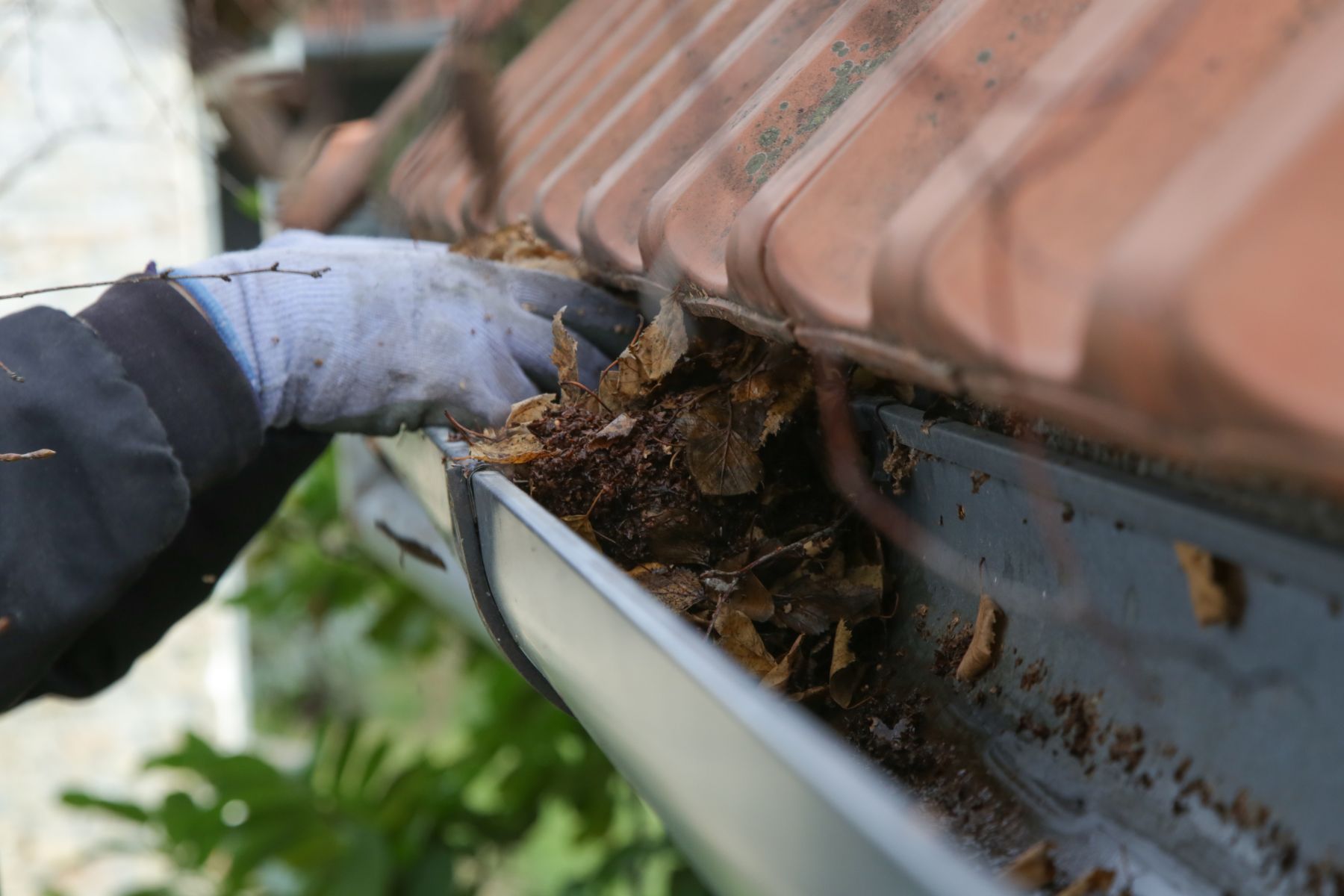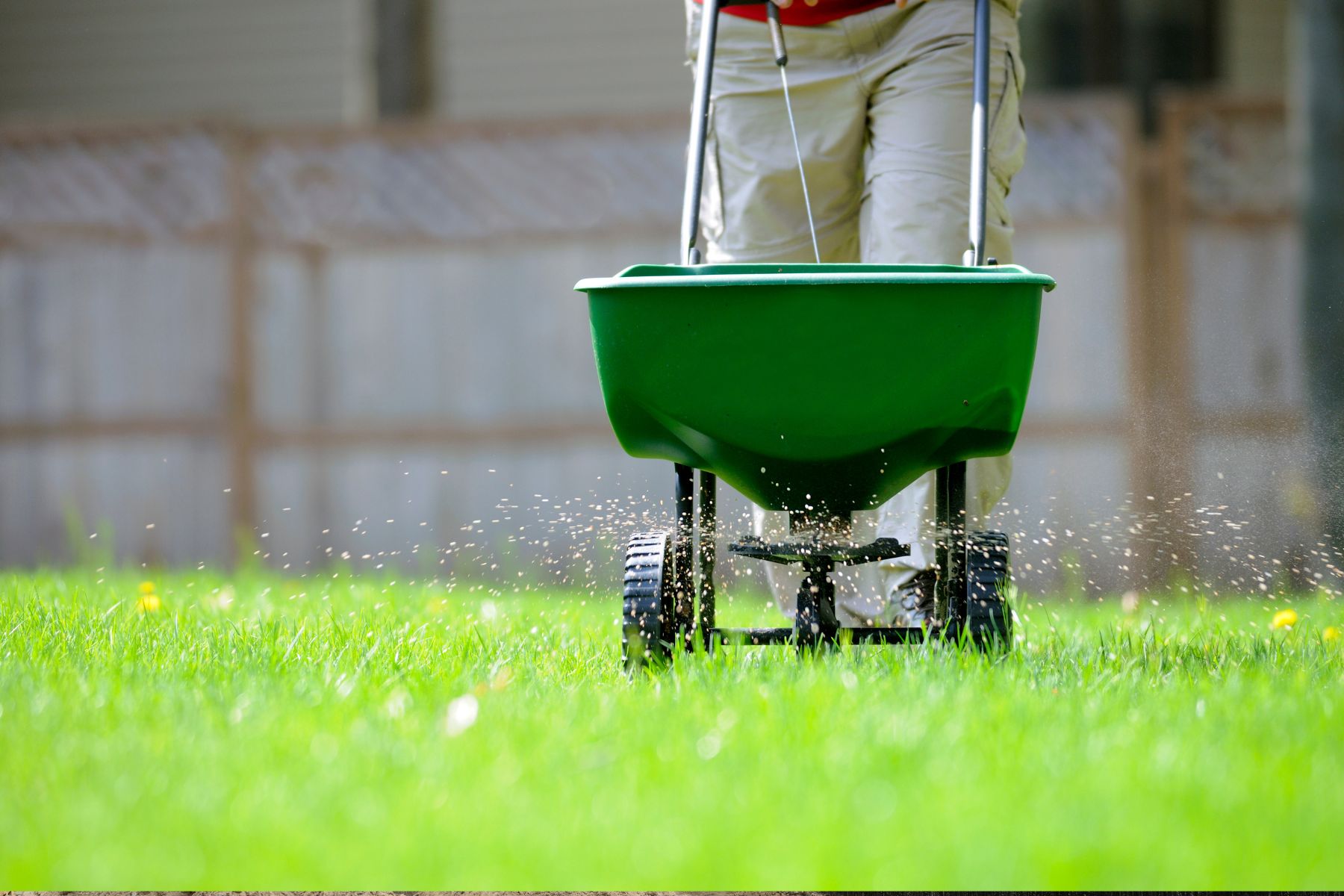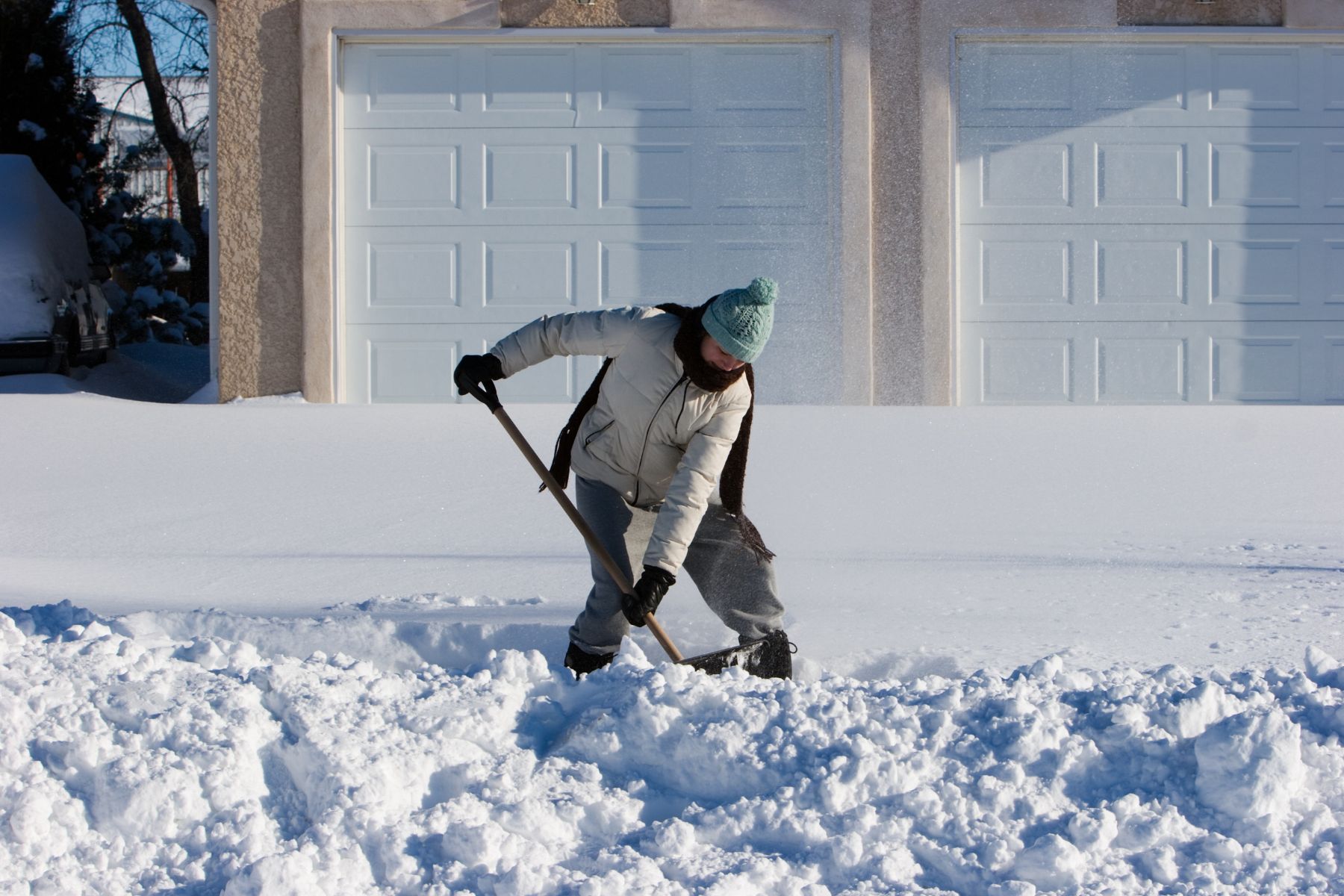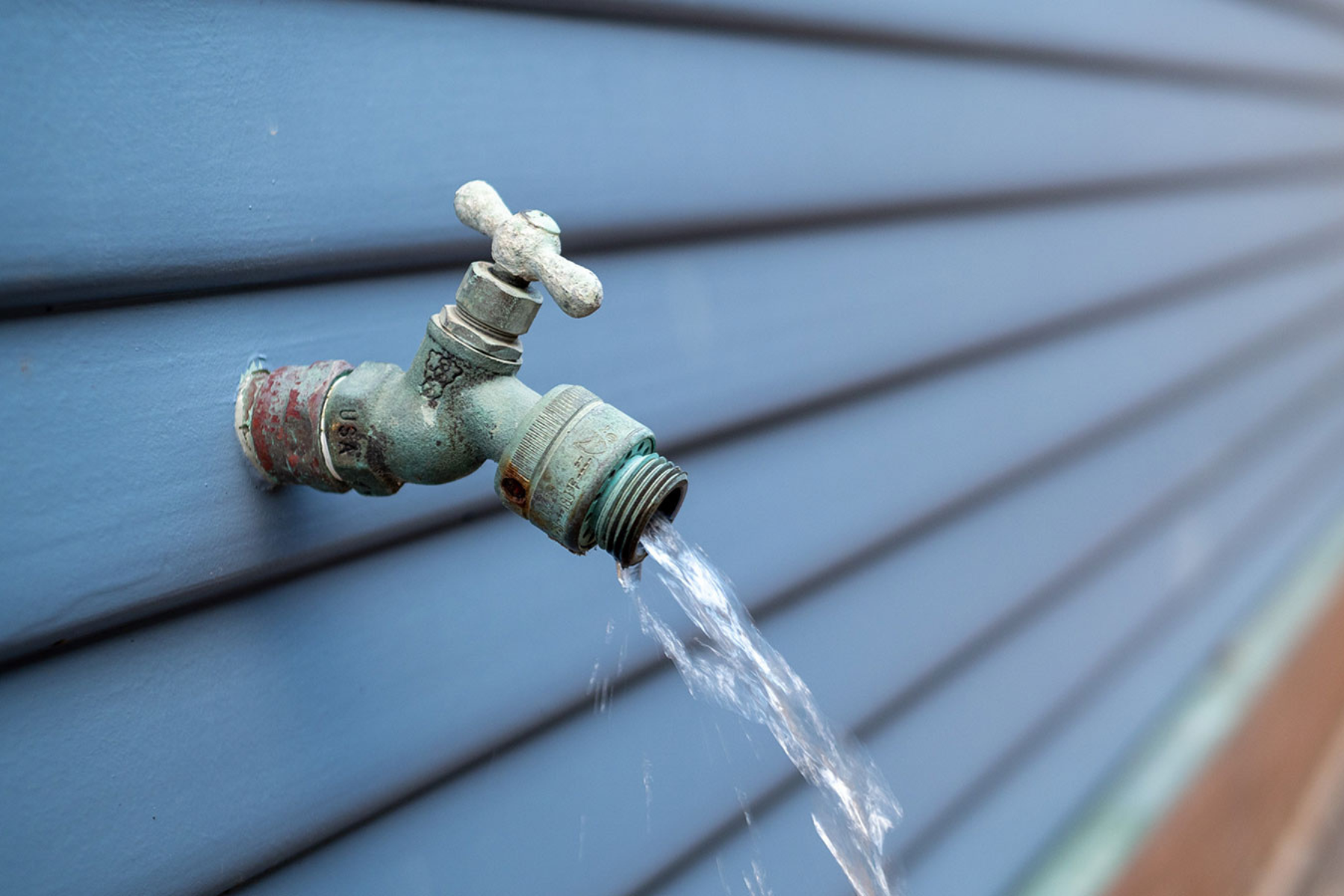Home Tips

Carbon Monoxide Fire Code Change
👉 If your home has any fuel-burning appliance (gas furnace, gas stove, wood stove, fireplace) or an attached garage, you must have a CO alarm on every storey of your home - not just near bedrooms.
👉 This includes levels like the main floor and the basement, even if no one sleeps there.
👉 The rules apply to houses, semis, townhomes, condos, apartments, and cottages.
The goal of this update is simple: fewer CO-related injuries and deaths, and better protection for every Ontario home.
✅ A Quick To-Do List for Homeowners
- Check where your CO alarms are located — will you meet the “every storey” requirement?
- Add alarms where needed before the 2026 deadline.
- Test alarms monthly and replace old units.
- Have your furnace, water heater, and other appliances inspected yearly.
- Share this info with family, neighbours, and clients who might not know about the upcoming change.
Heat Pumps
If you’ve heard the buzz about heat pumps lately, you’re not alone. Across Ontario and much of Canada, homeowners are rethinking their heating and cooling systems - and heat pumps are leading the conversation. But what exactly are they, and why are so many people making the switch?
What Is a Heat Pump?
A heat pump is an energy-efficient system that both heats and cools your home. Instead of burning fuel to create heat (like a furnace does), it moves heat from one place to another—much like your refrigerator. In winter, it draws warmth from the outside air (yes, even cold air contains heat energy!) and brings it indoors. In summer, the process reverses, removing heat from your home to keep things cool.
Why People Are Switching
Energy efficiency and lower bills
Because heat pumps move heat rather than generate it, they can be two to three times more efficient than traditional systems. That can mean big savings on your energy bills over time—especially as hydro and natural gas prices fluctuate.
Year-round comfort
One system handles both heating and cooling, so you don’t need a separate furnace and air conditioner. That’s a space-saver and a simplifier—less equipment to maintain and fewer repairs to juggle.
Cleaner and greener
With no fossil fuels being burned, heat pumps produce fewer greenhouse gas emissions. Many homeowners appreciate the smaller carbon footprint, and government rebate programs can help offset installation costs.
When It’s a Good Choice
Heat pumps perform best in well-insulated homes where heat loss is minimized. They’re especially appealing if:
- You’re replacing both your furnace and air conditioner soon.
- You’re considering solar panels or other green upgrades.
- You live in a home that’s already energy-efficient or has been retrofitted with good insulation and windows.
A Few Tips for Homeowners
- Get a professional assessment. A qualified HVAC technician can recommend the right size and model for your home.
- Ask about rebates. Federal and provincial incentives often cover part of the installation cost.
- Consider long-term value. While upfront costs can be higher, the efficiency, lower operating expenses, and increased home value can make a heat pump a smart investment.


Keeping the Creepy Crawlies Out
As the temperatures drop and the leaves start to turn, many of us are ready to cozy up indoors - but so are bugs, rodents, and other small critters. Fall is one of the busiest times of year for pest activity, as they look for warm, dry places to overwinter. A few simple steps now can help you avoid unwelcome visitors later.
Seal Up the Entry Points
Most pests only need a small gap to squeeze inside - mice can fit through holes the size of a dime! Inspect the outside of your home carefully. Pay special attention to areas around doors, windows, dryer vents, utility pipes, and the foundation. Replace worn weather stripping, add door sweeps, and use silicone caulking or expanding foam to close off gaps and cracks.
Keep the Perimeter Clear
Leaves, firewood, and clutter piled near your foundation create a perfect habitat for insects and rodents. Keep wood piles at least a few metres away from your home and store them off the ground if possible. Trim back shrubs and tree branches that touch the exterior walls or roof - these can serve as natural “bridges” for pests.
Maintain a Clean and Tidy Interior
Once inside, pests are looking for food and nesting materials. Keep countertops and floors clean, store pantry and pet food in sealed containers, and regularly vacuum corners, closets, and baseboards. Reducing clutter also helps you spot signs of pests early - like droppings, chewed materials, or small entry holes.
Don’t Forget About Pets
Our pets can accidentally invite pests in too! Be sure to check your dog or cat’s bedding regularly and wash it often. Avoid leaving pet food bowls out overnight, and if you have a dog door, inspect its seal for gaps.
Call in The Experts
If you suspect an infestation or want peace of mind before winter, consider scheduling an inspection with a professional pest control company - they can help identify and seal potential problem areas before pests move in.
Preventative Maintenance Goes a Long Way
Simple fall maintenance - like cleaning gutters, checking attic vents, and ensuring crawl spaces are dry - can also help prevent infestations. Many pests are attracted to damp, dark environments, so keeping your home well-ventilated and dry is key.
By taking a little time now to secure your home, you’ll save yourself a big headache later - and you’ll get to enjoy a cozy, comfortable fall without the creepy crawlies and critters!
Time to Clean Your Furnance
When crisp mornings and cooler evenings start to settle in, many of us start reaching for the thermostat. Before the temperatures drop any further, it’s a great time to make sure your furnace is ready for the months ahead. Regular furnace maintenance isn’t just about comfort - it’s about saving money, extending the life of your system, and avoiding stress when you least need it.
Here’s why late summer/early fall is the best time to schedule a furnace check-up:
- Avoid the seasonal rush. Once the first cold snap hits, HVAC companies are flooded with calls. Booking early guarantees an appointment on your schedule rather than theirs.Maximize efficiency. A clean, well-maintained furnace doesn’t need to work as hard, which means lower energy bills and a more consistent temperature throughout your home.
- Cleaner, healthier air. Homes with pets often have more hair and dander in circulation, which can clog filters faster. A furnace cleaning and fresh filter improve indoor air quality, helping both you and your pets breathe easier.
- Catch small problems early. A technician can spot worn parts or leaks before they cause breakdowns, saving you from costly emergency repairs.
- Protect your investment. Like any major appliance, your furnace lasts longer when it’s properly cared for.
Taking time for preventative maintenance this season means a warmer, more comfortable winter with fewer worries - and potentially big savings in the long run.


Stay Cool Indoors and Outdoors
Hot days can be tough on both people and pets. Whether you’re indoors working or outside enjoying the sunshine, here are some budget-friendly ways to beat the heat - and keep your furry family members safe and comfortable.
🏡 INDOOR COOLING TIPS
Keep Blinds Closed During the Day
Up to 30% of unwanted heat comes from your windows. Close blinds or curtains, especially on south- and west-facing windows, to keep the sun out and to help you and your pets stay cooler.
Use Fans Strategically
Ceiling fans should spin counter-clockwise in the summer to push cool air down. Place box fans near windows in the evening to bring in cooler air. Just keep cords out of paw’s reach.
Block Out Heat with Thermal Curtains
Thermal or blackout curtains are an affordable way to reduce indoor temperatures and save on AC costs.
Unplug Heat-Producing Electronics
Appliances and electronics give off heat even when idle. Unplug anything you're not using — your house (and your hydro bill) will thank you.
Set Your Thermostat Smartly
Raise your thermostat a few degrees and use fans to circulate air. Each degree you raise it can save up to 3% on your cooling costs.
Cooling Mats & Floors
Pets cool off faster on ceramic tile or with a $20 cooling mat.
Fresh Water in Multiple Spots
Pets can overheat quickly — make sure they have easy access to water in more than one room.
🏖️ OUTDOOR COOLING IDEAS
Shade Your Space
Add a patio umbrella, a pop-up canopy, or a shade sail. Bonus: It protects your furniture from UV damage too!
DIY Misting System and Water Play
Attach a mister to your hose or get a portable misting fan for under $50. It’s a game-changer for patios and decks.
Use Cooling Outdoor Fabrics
Opt for light-coloured, breathable fabrics like cotton or mesh when sitting outside. You’ll feel cooler than with heavy materials.
Water Fun Isn’t Just for Kids!
Sprinklers, splash pads, and even a simple bucket of cold water for your feet can be surprisingly refreshing.
Create a Breeze
Set up a fan near your seating area outside — plug-in or battery-powered fans can provide relief, especially in still air.
Walk When It’s Cool
Hot pavement can burn paws at 125°F — stick to early morning or evening strolls.
☀️ With small, affordable changes, you can enjoy the season while keeping tails wagging, paws safe, and everyone comfortable — indoors and out.
BBQ TLC
Ah, the smell of sizzling burgers, grilled veggies, and sunshine—BBQ season is officially here! Whether you’re a weekend grill master or a weekday kebab enthusiast, a little barbecue maintenance goes a long way in keeping your meals delicious and your setup safe.
Here’s how to keep your BBQ in tip-top shape without turning it into a chore:
1. 🧽 Give It a Good Scrub (Your Burgers Will Thank You!)
Start the season with a deep clean. Remove the grates and soak them in warm soapy water. Scrub off any old gunk or burnt bits with a stiff brush. No one wants last summer’s steak flavor mingling with this year’s salmon.
2. 🕷️ Check for Creepy Crawlers and Cobwebs
If your grill’s been hibernating in the garage or on the patio, give it a once-over for any surprise tenants. Spiders love burners (weird but true), and webs can block gas flow—yikes!
3. ❗️Gas Check = Safety First
For gas grills, inspect hoses and connections. A quick trick: mix water and a little dish soap, then brush it over the connections and turn on the gas (just don’t light it!). If you see bubbles, you’ve got a leak. Replace anything that looks worn or suspect.
4. 🌧️ Keep It Covered and Cozy
A BBQ cover may not seem glamorous, but it’ll protect your grill from the elements and extend its life. Rain, sun, and snow can do a number on your gear, so think of the cover as your BBQ's cozy coat.
5. 🧽 Clean as You Go
After every use, give the grates a quick brush while they're still warm (but not hot enough to singe your eyebrows). Wipe down any spills and empty the grease trap regularly—it’s not the kind of surprise you want overflowing during your next cookout.
6. 👉 Don’t Forget the Tank!
Always turn off the propane tank after grilling. It’s a simple step that helps prevent leaks and keeps things safer between sizzle sessions.
7. 🍗 Show Off Your Skills!
Once your BBQ is cleaned, checked, and ready to go, invite over some friends, toss on your favorite apron, and enjoy the fruits (or steaks) of your labour.


Why Spring Eavestrough Cleaning Is a Must for Every Homeowner
As the weather warms and the snow finally melts away, it’s tempting to turn your attention to flower beds and patios—but don’t overlook your eavestroughs. After months of winter buildup, spring is the ideal time to clean and inspect your gutters to keep your home safe from water damage.
🌧 What Do Eavestroughs Actually Do?
Your eavestroughs (or gutters) are designed to collect rainwater from your roof and channel it safely away from your home’s foundation. When they’re functioning properly, they help prevent:
- Roof leaks
- Water damage to siding and windows
- Soil erosion around the foundation
- Basement flooding
- Mold and mildew growth
🔎 Signs Your Gutters Need Attention
Even if you can’t see into them, there are some telltale signs your eavestroughs might be clogged or damaged:
- Water spilling over the edge during rain
- Sagging or pulling away from the house
- Stains on siding or fascia
- Pooling water near your foundation
- Plants or moss growing in the gutters
Here’s how to give your gutters the spring tune-up they deserve:
- Clear debris: Remove leaves, twigs, and any other blockages by hand or with a small scoop.
- Flush with water: Use a garden hose to rinse out remaining debris and check for proper drainage.
- Inspect for damage: Look for cracks, rust, sagging, or sections pulling away from the house.
- Secure loose parts: Tighten brackets and screws as needed.
- Check downspouts: Make sure they’re clear and directing water at least a few feet away from your home.
If cleaning your gutters is a hassle every year, you might want to install gutter guards to reduce buildup and make maintenance easier. These mesh or screen covers help keep leaves and debris out while still allowing water to flow through.
A Little Maintenance Goes a Long Way
Taking the time to check and clean your eavestroughs in early spring helps protect one of your biggest investments—your home. It’s a small task that can prevent big problems and expensive repairs down the line. Whether you DIY or hire a professional, your future self (and your home’s foundation) will thank you!
Fertilizing Your Grass with Pet Safety in Mind
As the snow melts and your grass starts to peek through, it’s time to help your lawn wake up for spring! And just like we might reach for a morning coffee, your lawn could use a little boost to get growing—cue the spring fertilizer!
🌱 Why Fertilize Now?
Feeding your lawn in early spring gives it the nutrients it needs to grow thick, green, and strong. A healthy lawn is better at crowding out weeds—and gives your pets a soft, lush place to play all season long.
🐾 Choose Pet-Safe Products
Look for fertilizers labeled pet-friendly or organic, and avoid synthetic chemicals where possible. After applying, keep pets off the grass until the product has been watered in and the lawn is dry—usually 24–48 hours.
💧 Pro Tips:
- Wait until your lawn is starting to green and you’ve mowed once.
- Use slow-release fertilizer for long-lasting results.
- Always follow the label instructions to keep your yard safe for furry family members!
Your grass (and your pets!) will thank you with a lush, happy lawn that’s perfect for zoomies, sunbathing, and backyard hangouts.


Give Your Yard a Spring Break: Help Bees Wake from Hibernation
As the snow melts and the first signs of spring emerge, many homeowners are eager to tidy up their yards. But did you know that waiting a little longer before raking, mowing, or trimming can help support local pollinators?
Bees and other beneficial insects hibernate in leaves, soil, and plant stems over the winter. When we clean up too soon, we risk disturbing or even removing these essential pollinators before they have a chance to wake up naturally. By leaving your yard undisturbed until temperatures consistently reach 10°C (50°F), you give these insects the time they need to emerge and start their important work of pollinating plants, trees, and gardens.
Delaying spring cleanup also has other benefits! Leaf litter and dead plant material provide natural mulch, enriching the soil and protecting new growth. Plus, allowing early-blooming flowers like dandelions and crocuses to thrive gives pollinators a much-needed food source after their long winter rest.
So this spring, consider pressing pause on yard work - your garden, the bees, and the environment will thank you!
Smoke and Carbon Monoxide Alarm Safety
Are Your Smoke & Carbon Monoxide Detectors Keeping Your Family & Pets Safe?
There is no better time than now to check on your home’s smoke and carbon monoxide (CO) detectors. These small but essential devices play a crucial role in protecting your household—including your pets—from fire and carbon monoxide poisoning. Since pets are often home alone for long periods, ensuring proper placement and maintenance is key to their safety.
Where Should You Install Smoke & CO Detectors?
✔ Smoke Detectors should be placed:
In every bedroom and outside each sleeping area
On every level of your home, including the basement
In hallways and near stairwells
At least 10 feet away from cooking appliances to avoid false alarms
✔ Carbon Monoxide Detectors should be placed:
On every level of your home
Outside sleeping areas to alert you if CO levels rise overnight
Near attached garages or fuel-burning appliances like fireplaces and furnaces
Near pet areas if your pets spend time in a specific room while you’re away
Maintenance Tips to Keep Your Family & Pets Safe
✅ Test monthly by pressing the test button
✅ Replace batteries at least once a year (unless using a 10-year sealed battery)
✅ Clean regularly to prevent dust buildup
✅ Replace units every 10 years for smoke detectors and every 5-7 years for CO detectors
🔥 Pet Emergency Tip: If a fire or CO alarm goes off while you're not home, your pets could be trapped. Consider placing a pet rescue sticker on your front door to alert first responders that pets are inside.
A properly maintained smoke and CO detector system can save lives—both human and furry! Take a few minutes this month to test yours and ensure they’re placed correctly for maximum protection.


Decluttering Your Home
A clutter-free home is not just about aesthetics - it’s about creating a space where you can relax, recharge, and focus on what truly matters. Decluttering your home might seem like a daunting task, but with a strategic approach, it can be both manageable and deeply rewarding. Here are some practical tips to help you get started:
Set Clear Goals
Before diving in, decide what you want to achieve. Are you looking to create more space, prepare your home for sale, or simply reduce stress? Having a clear goal will keep you motivated throughout the process.
Tackle One Area at a Time
Decluttering an entire home can feel overwhelming. Break it down into smaller tasks by focusing on one room, or even one drawer, at a time. Completing smaller areas gives you a sense of accomplishment and encourages you to keep going.
Use the Four-Box Method
As you declutter, use four boxes labeled:
Keep: Items you use regularly or hold significant sentimental value.
Donate: Items in good condition that someone else could benefit from.
Sell: Items of value that you no longer need.
Trash: Items that are broken, worn out, or no longer usable.
Ask Yourself Key Questions
When deciding whether to keep an item, ask yourself:
- Have I used this in the last year?
- Does this item spark joy or serve a purpose?
- Would I buy this again today?
Create New Habits
Decluttering is not a one-time activity. Maintain your clutter-free space by adopting habits like:
- Implementing a one-in, one-out rule: For every new item brought into your home, remove an old one.
- Setting aside 10 minutes each day to tidy up.
- Regularly evaluating your belongings to ensure they still serve your needs.
If the task feels too large or emotional, don’t hesitate to hire a professional organizer. They can provide guidance and a fresh perspective to help you achieve your goals.
Celebrate Your Progress
Each decluttered space is a step toward a more organized and peaceful home. Celebrate your successes along the way, whether it’s enjoying a clutter-free kitchen counter or hosting friends in your newly refreshed living room.
The Benefits of Decluttering
A tidy home offers more than just physical space; it provides mental clarity, reduces stress, and increases productivity. If you’re preparing to sell your home, decluttering can also help prospective buyers see its full potential, making it more appealing and easier to sell.
Take the first step today. Your home should be a sanctuary, and decluttering is the key to transforming it into one.
Create an Emergency Kit for You and Your Pet
Getting shut-in by extreme winter weather, or having to deal with an extended power outage is a real possibility across Canada. It is suggested you have enough supplies to meet your families needs, including your pets, for at least 72 hours. Here’s what you should consider for a winter-specific emergency kit for your home.
For You and Your Family
Warmth and Safety
Blankets and Sleeping Bags: Opt for thermal or emergency blankets designed for extreme cold.
Clothing Layers: Include thermal underwear, wool socks, gloves, hats, and scarves.
Backup Heat Source: A battery-powered heater or a wood-burning stove if possible (ensure proper ventilation).
Power and Light
Flashlights and Batteries: Avoid candles, as they can pose fire risks.
Portable Chargers: Fully charged power banks to keep your devices running.
Headlamps: Useful for hands-free lighting.
Food and Water
Non-Perishable Food: Stock up on canned soups, ready-to-eat meals, and snacks that don’t require cooking.
Water: One gallon per person per day for at least three days.
Manual Can Opener: Essential if your food is canned.
Emergency Tools
First Aid Kit: Include bandages, antiseptics, and any prescription medications.
Weather Radio: A battery-powered or hand-crank radio to stay updated on weather conditions.
Household Needs
Rock Salt or Sand: To prevent slips on icy walkways.
Fire Extinguisher: In case of emergencies with backup heating sources.
Backup Generator: If possible, ensure it's properly maintained and fueled.
For Your Pets
Warmth
Extra Bedding: Blankets or pet-safe heated pads to keep them cozy.
Sweaters or Jackets: For pets that get cold easily, such as short-haired breeds or small dogs.
Paw Protection: Booties or pet-safe balm to prevent cracked paws from exposure to ice and salt.
Food and Water
Three-Day Supply of Pet Food: Opt for airtight containers to prevent spoilage.
Water: Store extra water specifically for your pet.
Bowls: Collapsible or insulated bowls to prevent freezing.
Safety
Leash, Harness, or Carrier: For safe mobility if you need to evacuate.
Current ID Tags: Make sure they’re updated with your contact information.
Sanitation
Litter and Pee Pads: Make sure to have extra litter and even a spare catbox. Consider pee pads in cases where your pup may not be able to go outside for a period of time.
Tips for Winter Power Outages
Stay Warm Safely: Never use outdoor appliances like grills or camp stoves indoors, as they can produce deadly carbon monoxide.
Conserve Heat: Close off unused rooms, block drafts with towels, and keep everyone in one room to retain warmth.
Prevent Water Damage: Let faucets drip to avoid frozen pipes.
Prepare for Darkness: Keep all lighting supplies in an easily accessible place.
Pet-Specific Considerations in Cold Weather
Indoor Time: Keep pets indoors as much as possible. If they need to go outside, keep trips brief.
Frozen Water: Check your pet’s water regularly to ensure it hasn’t frozen.
Routine: Maintain their feeding and exercise schedules to minimize stress.
Winter weather can be unpredictable, but with a bit of preparation, you can ensure your household is safe, warm, and secure.


Prepare for Snow Before it Arrives
Winter is on its way, and a little planning can save you from scrambling during the first snowfall Preparing now means you’ll be ready to tackle whatever winter has in store. Here’s a quick checklist to make sure you're set.
Stock Up on Salt
De-icing salt or ice melt is essential for keeping walkways safe. Stock up early, as stores can run low once winter hits. Choose the right kind of salt for your surfaces, and if you have pets, consider a pet-safe variety to protect their paws.
Inspect Your Shovels
Shovels are the frontline defense against snow accumulation, so make sure they’re in good shape. Check for cracks or warping, and consider replacing any broken ones. Having a sturdy shovel will make clearing snow easier and reduce the risk of injury.
Service Your Snowblower
If you have a snowblower, don’t wait until the first storm to find out it won’t start. Take time now to service it: change the oil, check the spark plug, and make sure it’s fueled up. Running it briefly before winter sets in can help confirm it’s ready to go.
Preparing ahead for winter helps keep your home safe, accessible, and easy to manage when snow arrives. Taking these simple steps now will save time and hassle later on, so you can enjoy winter without the stress!
Turn Off and Drain Your Outdoor Faucets Before Winter
Avoid potential major damage to your plumbing system or even the structure of your home, by ensuring you turn off and drain all outdoor faucets - including those in your garage - before winter arrives. Water left in pipes can freeze and expand, resulting in cracked or burst pipes.
Steps to Turn Off Outdoor Faucets
1. Locate the Shut-Off Valve - Find the indoor shut-off valve that controls water flow to your outdoor faucets. It’s typically located in the basement or crawl space, near the point where the pipe leading outside exits the home.
2. Turn Off the Water - Close the shut-off valve by turning it clockwise until it is fully tight.
3. Drain the Faucet - Once the valve is closed, open the outdoor faucet to drain any remaining water in the pipe and leave it open for the winter. This step is important to ensure that no water is left in the pipe to freeze.
4. Disconnect Hoses - If you have hoses connected to the faucet, be sure to disconnect and store them to prevent any water left in the hose from freezing and backing up into the faucet.
5. Install a Faucet Cover (Optional) - To add an extra layer of protection, you can install an insulated faucet cover, which helps prevent freezing during extremely cold weather.


